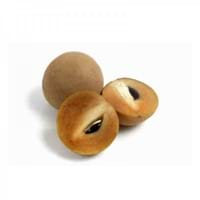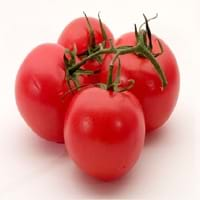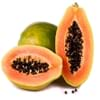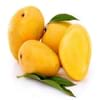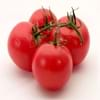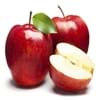Health Benefits
Anti-inflammatory properties, Arthritis treatment, Regulates Blood Sugar, Unknown
Anti depressant, Cancer prevention, Heart care, Muscle pain relief, Prevents constipation, Regulation of heart rate, Weight loss properties
General Benefits
Boosts immune system, Controls blood sugar levels, Digestive aid
Controls blood pressure, Eye care, Maintains healthy cholesterol level, Strengthens bones
Skin Benefits
Nourishes skin, Protects skin from oxidative stress
Anti-aging benefits, Heals sunburn, Skin rejuvenation, Treatment of acne, Treatment of skin diseases
Hair Benefits
Prevents hair loss, Promotes longer and healthier hair, Regulates hair growth
Good conditioner, Prevents hair loss, Softening mask
Allergy Symptoms
Asthma, Red rash, Swelling of mouth, tongue or lips
Anaphylaxis, Coughing, Diarrhea, Eczema, Hives, Itching sensation in throat, Nausea, Skin Rashes, Runny nose, Sneezing, Swelling of mouth, tongue or lips, Vomiting, Wheezing
Side Effects
Diarrhoea, Vomiting
Heart burn
Best Time to Eat
As a snack in the late afternoon
Along with meal, Don't consume at night and before bed, Morning time (before lunch)
Vitamin B5 (Pantothenic Acid)
Vitamin C (Ascorbic Acid)
Vitamin E (Tocopherole)
Not Available
Vitamin K (Phyllochinone)
Not Available
Lutein+Zeaxanthin
Not Available
Phytosterol
Not Available
Calories in Fresh Fruit with Peel
Calories in Fresh Fruit without Peel
Not Available
Not Available
Calories in Juice
Not Available
Calories in Jam
Not Available
Calories in Pie
Not Available
Type
Berry
Berry, Fruit vegetable
Season
Winter
All seasons
Varieties
Bush Table Queen, Heirloom Table Queen, Festival Hybrid, Early Acorn Hybrid, Table Ace, Ebony and Cream of the Crop
Better Boy, Early Girl, Beefsteak, Beefmaster, Pink Brandywinem, Caspian Pink, Thai Pinks, Hawaiian Pineapple, Kellogg’s Breakfast, Cherokee Purple, Black Ethiopian and Paul Robeson
Seedless Variety
Not Available
Yes
Color
Dark green, Green-yellow, Orange green
Green, Orange, Pink, Purplish black, Red, White, Yellow
Inside Color
Not Available
Red
Taste
Sweetish
Sour, Sweet
Origin
Central America, North America, Unknown
Central America, South America
Soil Type
Well-drained
Loam, Sandy loam
Climatic Conditions
Cold, Sunny
Sunny, Warm
Facts about
- It was named as Acorn Squash for its resemblance to a large ribbed acorn.
- It is said that squash was being grown in Mexico as long as 10,000 years ago.
- It was the first food cultivated by native American Indians.
- Around 10,000 varieties of tomatoes are grown in the world.
- In Buñol, people celebrate the Tomatina festival where around 1.5 lakh tomatoes are used.
- As per Guinness book of records, heaviest tomato weighed 3.51 kg.
Cocktails
Not Available
Yes
Other Countries
Egypt, India, Iran, Italy, Mexico, Russia, Turkey, Ukraine, United States of America
Brazil, Egypt, India, Iran, Italy, Mexico, Spain, Turkey, United States of America
Top Exporter
India
Netherlands
Botanical Name
Cucurbita Pepo
Solanum lycopersicum
Synonym
Winter Squash
Lycopersicon esculentum
Subkingdom
Tracheobionta
Tracheobionta
Division
Magnoliophyta
Magnoliophyta
Class
Magnoliopsida
Magnoliopsida
Subclass
Dillenhidae
Asteridae
Order
Cucurbitales
Solanales
Family
Cucurbitaceae
Solanaceae
Species
Pepo
S. lycopersicum
Generic Group
Not Available
Nightshade
Compare Sapota and Tomato
It is important compare Sapota and Tomato as both the fruits have a different nutritional value. Their comparison can be done on the basis of their vitamin and mineral content, calories, benefits as well as characteristics, making it easier for us to choose the best fruit for our diet. Their general health benefits are as follows:
Sapota Benefits: boosts immune system, controls blood sugar levels and digestive aid.
Tomato Benefits: controls blood pressure, eye care, maintains healthy cholesterol level and strengthens bones.
Fruits are also used as a remedy for various hair problems. The hair benefits of Sapota are: prevents hair loss, promotes longer and healthier hair and regulates hair growth and hair benefits of Tomato are: good conditioner, prevents hair loss and softening mask. Some fruits are known to cause allergic reactions. The allergy symptoms of first fruit are: asthma, red rash and swelling of mouth, tongue or lips and the symptoms of second fruit are: anaphylaxis, coughing, diarrhea, eczema, hives, itching sensation in throat, nausea, runny nose, skin rashes, sneezing, swelling of mouth, tongue or lips, vomiting and wheezing. Get sorted Sapota vs Tomato comparison with the help of fruit comparison tool by fruitvs.com.
